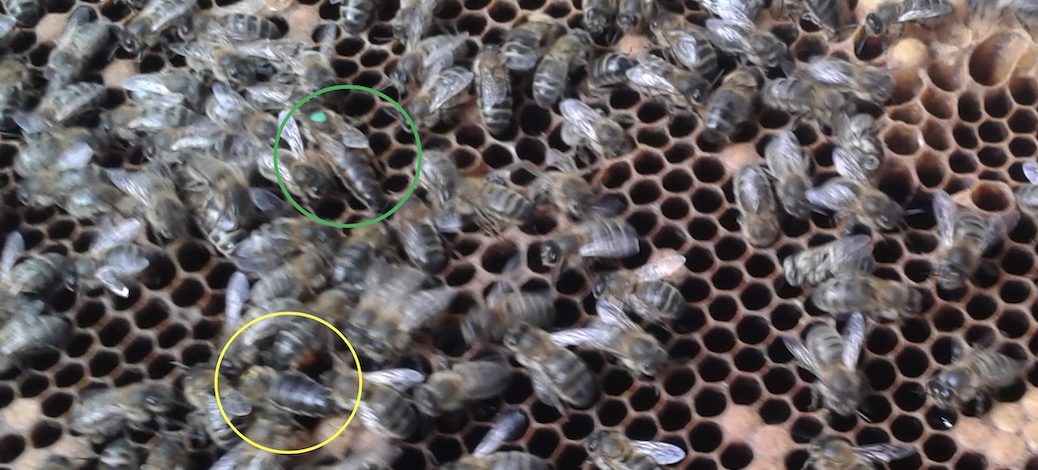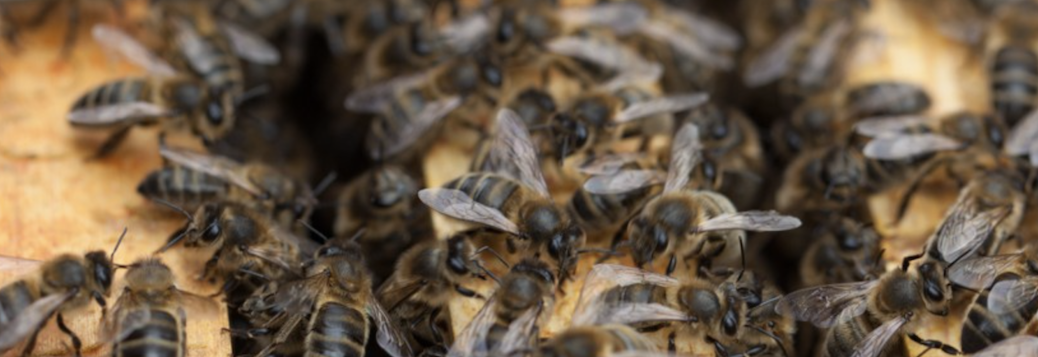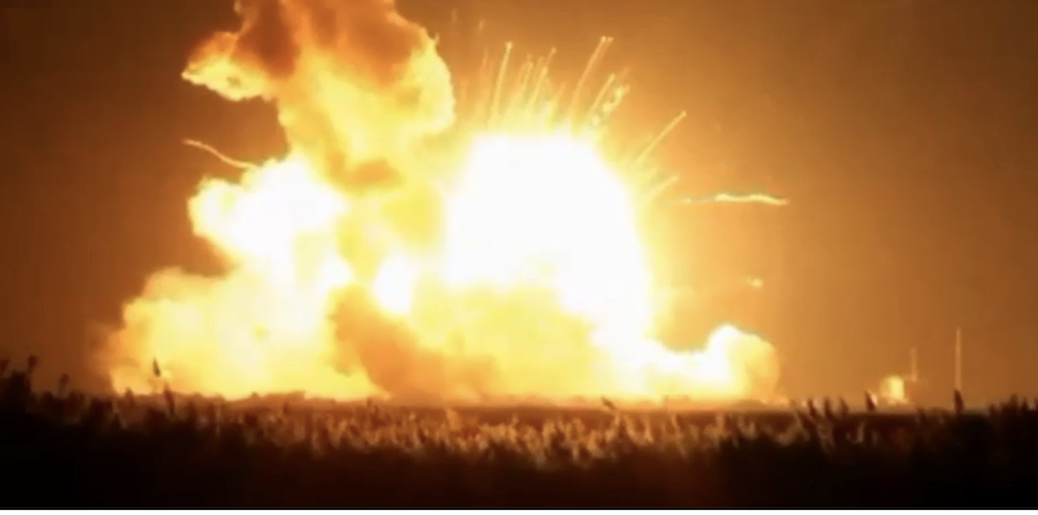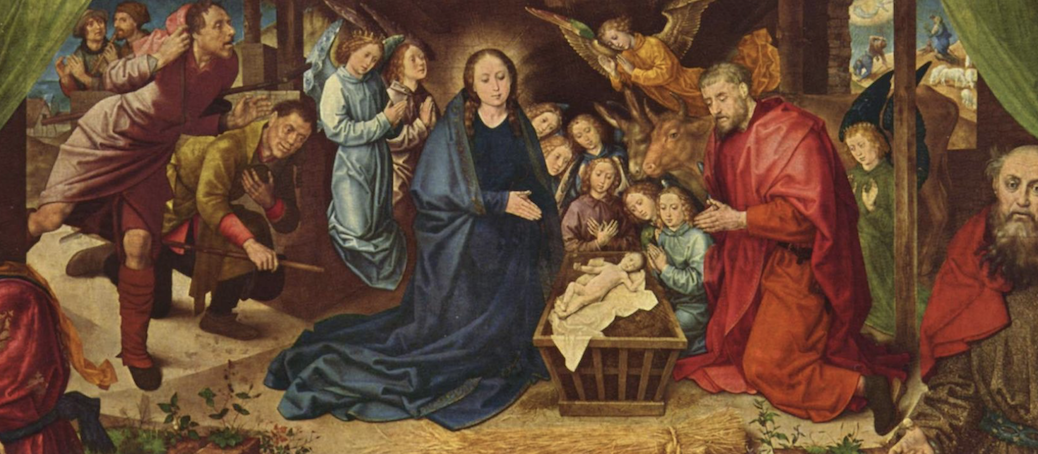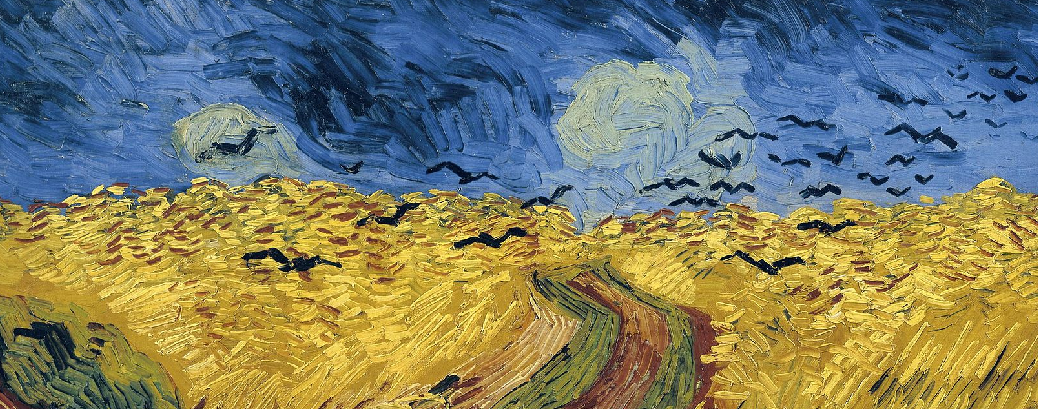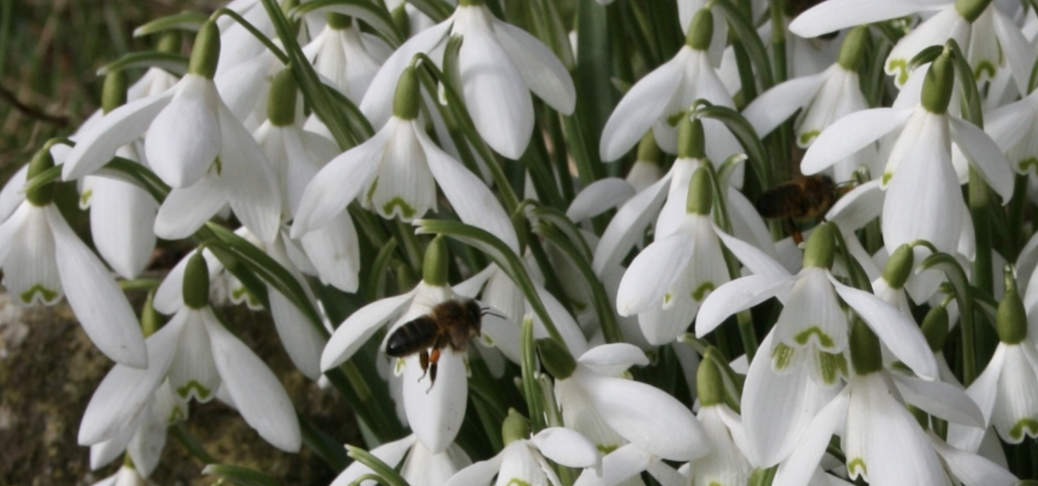Honey bees have been studied for centuries and most of their behaviour is well understood – all the way down to the chemistry of their pheromones and the order of molecules in their DNA. However, one aspect of bee behaviour that remains mysterious is the Drone Congregation Area or DCA. Continue reading How to Find Drone Congregation Areas
Category Archives: Bee Basics
How do I know if my hive is queenless?
Unless you killed the queen yourself, or saw her die, you can’t be certain the bees are queenless unless you test them. Here is the simple queenlessness test. Continue reading How do I know if my hive is queenless?
Perfect Supersedure
Supersedure is a characteristic of the native Irish honey bee. It is where the bees replace an ageing or waning queen without swarming.
Perfect supersedure is where the old honey bee queen obligingly remains in-situ, laying to the best of her abilities, until the new queen is up and running – before gracefully fizzling out.
This is a sought-after trait for obvious reasons and if you find it in one of your colonies you should definitely factor it in to your bee improvement assessments. Click here for Bee Improvement and to download Assessment sheets.
Here are some fuzzy photo’s of a perfect supersedure in one of our hives yesterday (20.5.19)
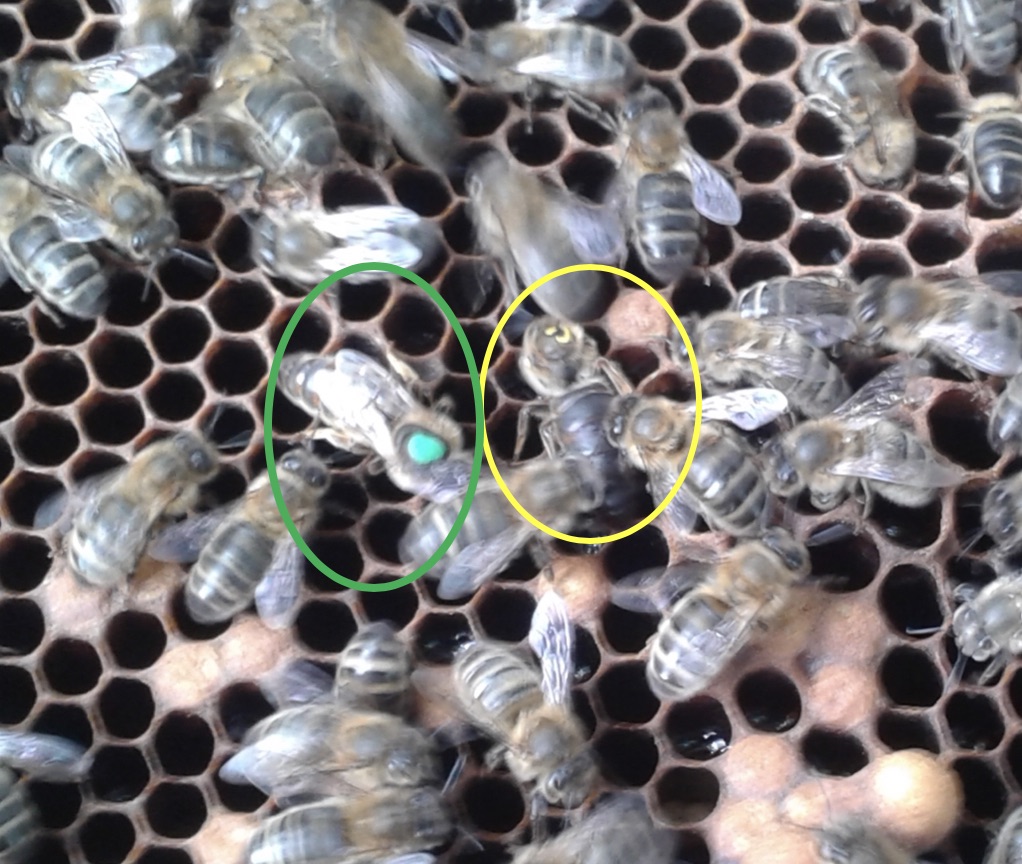
Click here for Fighting Queen Bees
Click here for Piping Queen Bees
Click here for How to Improve your Bees
Click here for more about the life cycle of honey bees
Click here for more about the Queen Bee
Click here for Swarm Prevention
Copyright © Beespoke.info 2019. All Rights Reserved.
Irish Native Queen & Nuc Suppliers

Click here for updated list of Irish Native Honey Bee suppliers
Click here for more about the Native Irish Honey Bee
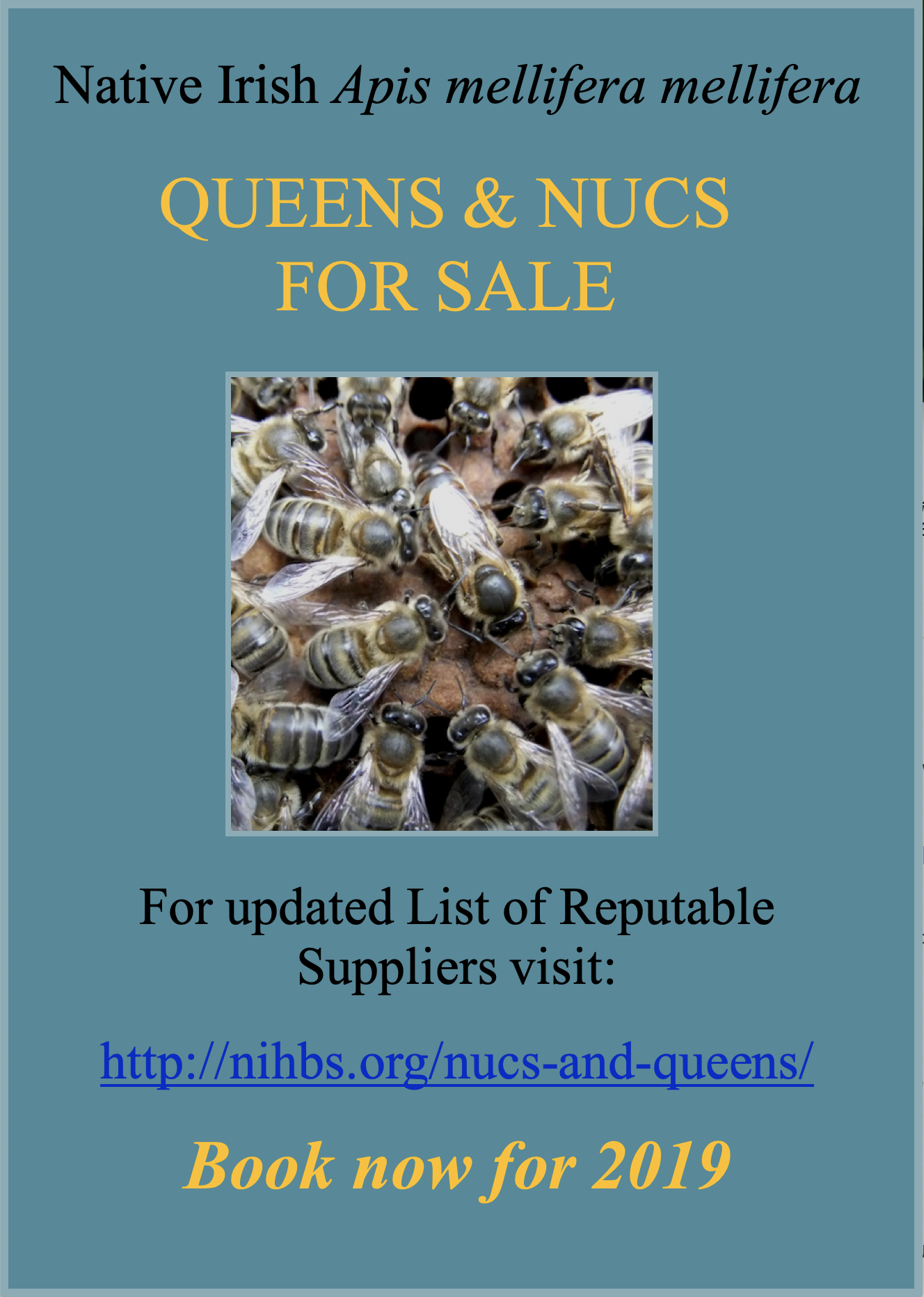
Keeping Bees isn’t Rocket Science…
…it’s much more difficult than that!
Heritage Bill?
The Heritage Bill, due before the Seanad this week (21st February 2017 ) seems to have nothing at all to do with Heritage other than to extend the period landowners or County Councils can burn, cut, grub or otherwise erase the natural bit from the landscape. That natural bit is the bit our bees rely on.
Bee Flowers – February
February 1st is the Feast Day of St Brigid (AD450-525) female patron saint of Ireland.
For us Celts it is also the first day of Spring but you Saxon Dogs will have to wait till March 20th!
For the bees though – read on: Continue reading Bee Flowers – February
Christmas – Bees and Wintering
Christmas is one of the four quarter days which mark the changing of the seasons.
The four quarter days are:
- Lady day or the Feast of the Annunciation 25th March;
- Midsummer’s day around 25th June;
- Michaelmas 29th September;
- Christmas 25th December – lest we forget. Fat chance.
They all approximately coincide with either an equinox or a solstice.
Continue reading Christmas – Bees and Wintering
Ireland Pollinator Plan 2015-2020
The picture above is by Vincent Van Gogh (obviously says you), it lives in the Van Gogh Museum, Amsterdam and is called ‘Wheatfield with Crows’. It was painted in 1890 – possibly his last picture. Vincent didn’t know about climate change or intensive agriculture; if he had, he would probably have cut the other ear off and left the crows out. Continue reading Ireland Pollinator Plan 2015-2020
Pollination and Honey Bees
So, why are honey bees such important pollinators?
From an ecological point of view there are at least 3 reasons:
- Honeybees have evolved in tandem with certain flowers and they have adapted to facilitate each other;
- One bee is able to rapidly communicate the location of a pollen/nectar source to the whole hive and an army sets out;
- The bees then concentrate faithfully on that flower species until the pollen runs out or the nectar dries up, at which point the job of pollination is accomplished.
These features obviously make the honey bee important from an agricultural/commercial point of view. In addition, hives of bees are mobile and can be moved from crop to crop – an arrangement which can suit bees, farmers and beekeepers so long as everyone has a bit of respect. Wouldn’t that be great?
But some detail: Continue reading Pollination and Honey Bees


